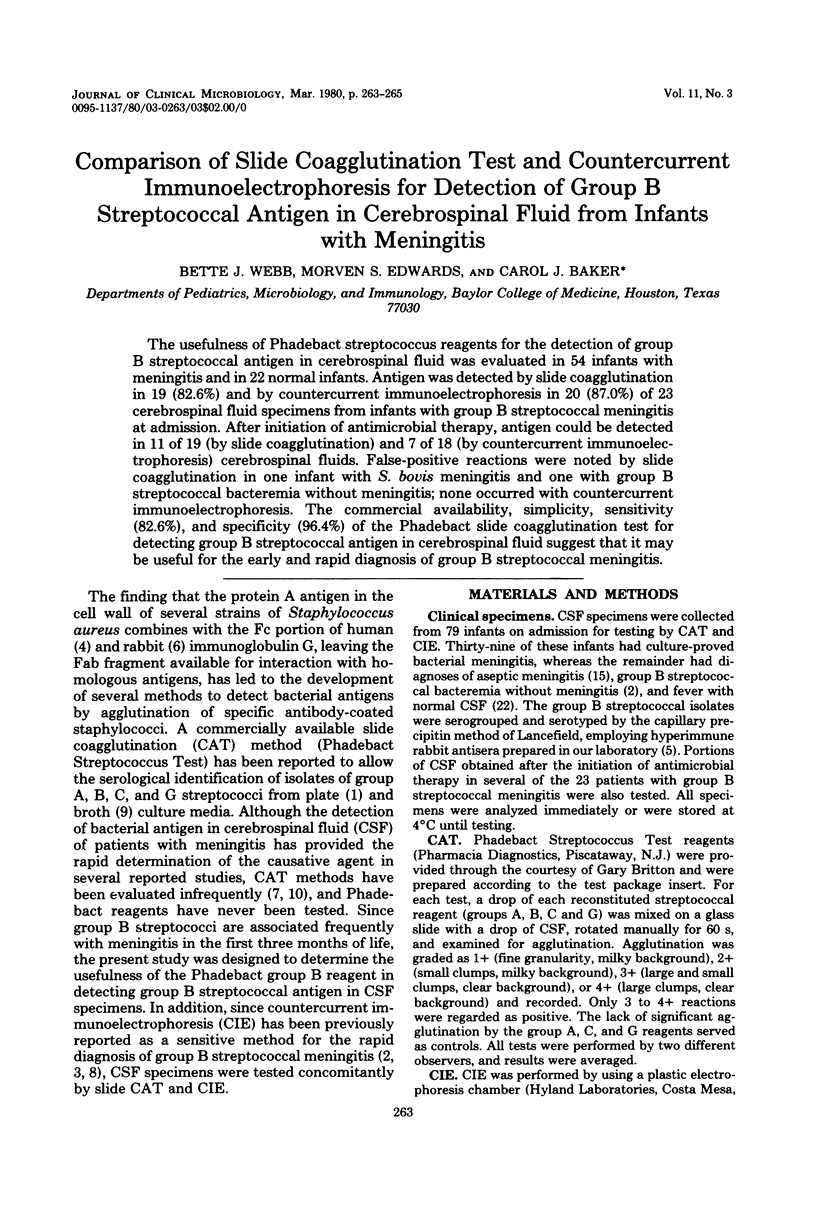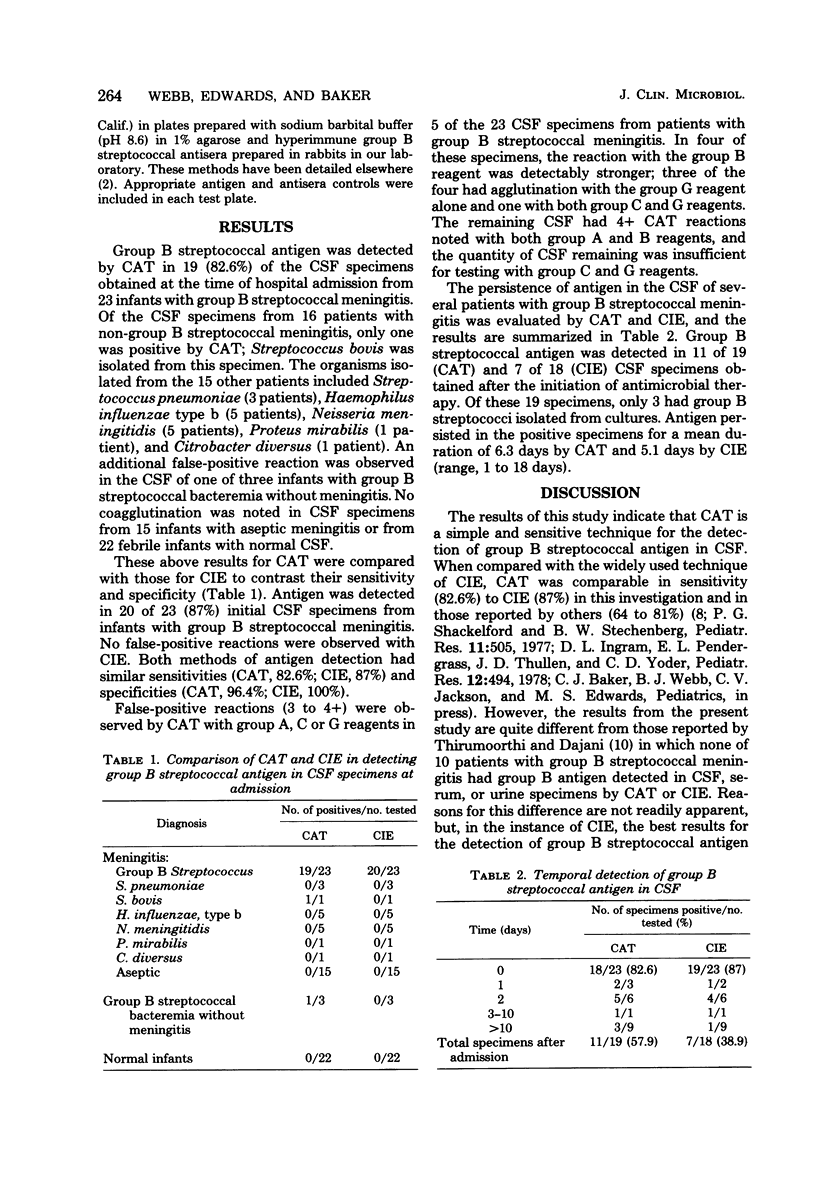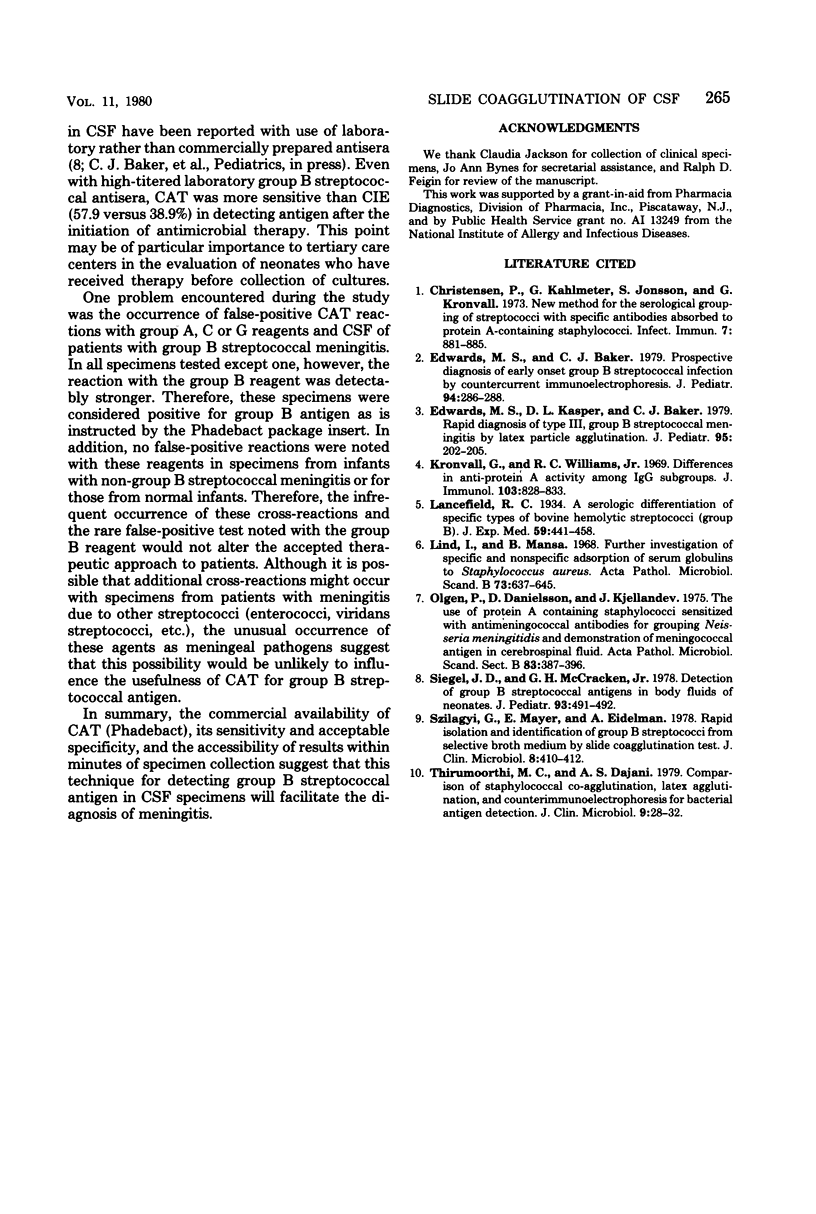Abstract
The usefulness of Phadebact streptococcus reagents for the detection of group B streptococcal antigen in cerebrospinal fluid was evaluated in 54 infants with meningitis and in 22 normal infants. Antigens was detected by slide coagglutination in 19 (82.6%) and by countercurrent immunoelectrophoresis in 20 (87.0%) of 23 cerebrospinal fluid specimens from infants with group B streptococcal meningitis at admission. After initiation of antimicrobial therapy, antigen could be detected in 11 of 19 (by slide coagglutination) and 7 of 18 (by countercurrent immunoelectrophoresis) cerebrospinal fluids. False-positive reactions were noted by slide coagglutination in one infant with S. bovis meningitis and one with group B streptococcal bacteremia without meningitis; none occurred with countercurrent immunoelectrophoresis. The commercial availiability, simplicity, sensitivity (82.6%), and specificity (96.4%) of the Phadebact slide coaggluatination test for detecting group B streptococcal antigen in cerebrospinal fluid suggest that it may be useful for the early and rapid diagnosis of group B streptococcal meningitis.
Full text
PDF


Selected References
These references are in PubMed. This may not be the complete list of references from this article.
- Christensen P., Kahlmeter G., Jonsson S., Kronvall G. New method for the serological grouping of Streptococci with specific antibodies adsorbed to protein A-containing staphylococci. Infect Immun. 1973 Jun;7(6):881–885. doi: 10.1128/iai.7.6.881-885.1973. [DOI] [PMC free article] [PubMed] [Google Scholar]
- Edwards M. S., Baker C. J. Prospective diagnosis of early onset group B streptococcal infection by countercurrent immunoelectrophoresis. J Pediatr. 1979 Feb;94(2):286–288. doi: 10.1016/s0022-3476(79)80845-8. [DOI] [PubMed] [Google Scholar]
- Edwards M. S., Kasper D. L., Baker C. J. Rapid diagnosis of type III group B streptococcal meningitis by latex particle agglutination. J Pediatr. 1979 Aug;95(2):202–205. doi: 10.1016/s0022-3476(79)80651-4. [DOI] [PubMed] [Google Scholar]
- Kronvall G., Williams R. C., Jr Differences in anti-protein A activity among IgG subgroups. J Immunol. 1969 Oct;103(4):828–833. [PubMed] [Google Scholar]
- Lind I., Mansa B. Further investigation of specific and non-specific adsorption of serum globulins to Staphylococcus aureus. Acta Pathol Microbiol Scand. 1968;73(4):637–645. doi: 10.1111/j.1699-0463.1968.tb03221.x. [DOI] [PubMed] [Google Scholar]
- Olcén P., Danielsson D., Kjellander J. The use of protein A-containing staphylococci sensitized with anti-meningococcal antibodies for grouping Neisseria meningitidis and demonstration of meningococcal antigen in cerebrospinal fluid. Acta Pathol Microbiol Scand B. 1975 Aug;83(4):387–396. doi: 10.1111/j.1699-0463.1975.tb00117.x. [DOI] [PubMed] [Google Scholar]
- Siegel J. D., McCracken G. H., Jr Detection of group B streptococcal antigens in body fluids of neonates. J Pediatr. 1978 Sep;93(3):491–492. doi: 10.1016/s0022-3476(78)81174-3. [DOI] [PubMed] [Google Scholar]
- Szilagyi G., Mayer E., Eidelman A. I. Rapid isolation and identification of group B streptococci from selective broth medium by slide co-agglutination test. J Clin Microbiol. 1978 Oct;8(4):410–412. doi: 10.1128/jcm.8.4.410-412.1978. [DOI] [PMC free article] [PubMed] [Google Scholar]
- Thirumoorthi M. C., Dajani A. S. Comparison of staphylococcal coagglutination, latex agglutination, and counterimmunoelectrophoresis for bacterial antigen detection. J Clin Microbiol. 1979 Jan;9(1):28–32. doi: 10.1128/jcm.9.1.28-32.1979. [DOI] [PMC free article] [PubMed] [Google Scholar]


